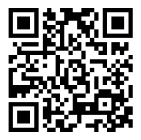Sobre nosotros
Servicios al cliente
Atención al cliente
Acceso Regional
Legales y políticas
Obtén la aplicación

Apunta tu cámara para descargar la aplicación
Copyright © 2024 Desertcart Holdings Limited


Instructional-design Theories and Models: A New Paradigm of Instructional Theory, Volume II (Instructional Design Theories & Models)
A**R
Great reference book.
Met the need for researching curriculum designs.
W**R
Textbook
I needed the textbook for a class and was able to get it on Amazon a lot cheaper than through the book store. The book is n very good shape!
D**R
Great Set of Books at a Great Price
Great price. Saved lots of dollars. Books are in great condition
N**E
A basic for any ID book collection
Reigeluths first volume of Instructional Design Theories and Models was published 16 years ago and quickly became "the bible for the development of many instructional designers in the years that followed" (p. 1). In this second volume, Reigeluth has assembled more than a survey of instructional design and learning theories. He sought to reflect the great diversity and changes in thinking since his first volume in 1983. He reasoned logically that the original book formed a picture of the topic in that time period and now it was time to assemble a new snapshot. Taken together, volumes I and II fully illustrate the roots and development of instructional design theories in the U.S. from the 1970s to today.Volume two is organized into five units. An introductory unit and a reflective unit surround the three units that form the core of the book. These three units present instructional design theories grouped around cognitive, psychomotor and affective development themes. While the topics are divided, the overarching theme of the book is a systems approach to learning-- everything is related.The introductory unit offers two papers presenting perspectives on the theories and changes that have occurred since the first volume. Reigeluth (1999) begins the unit by defining the terminology of design and theory. He works to establish the framework within which the reader can "analyze and understand the instructional-design theories presented in this book" (p.5).Thirty-eight authors present twenty-three papers in the three units that form the core of this book-- the descriptions and reports on the state of learning and instructional design theory. Reigeluth organizes each unit purposefully. He explains the selected content and his thinking about their organization by briefly introducing each unit. Each paper is authored by a recognized authority on that topic: Jonassen on constructivist learning environments; Hanaffin on open learning environments; and Gardner on multiple approaches to learning, for instance. Romiszowski presents the single paper that comprises the second unit, psychomotor development.The only comment that might be taken as a mild negative suggests that while there are many discussions of changing paradigms, the reader is left without a sense of one direction in which to develop instruction. This is more a reflection of our times than the quality or organization of the text. Thirty years ago there were fewer theories and more consensus than is evident today. Reiguluth has been fair to present the multiple points of view, even when they do not intersect to form one dominant theory by which to gauge the work of instructional design.The author, Charles M. Reigeluth has been a Professor of Instructional Systems Technology at Indiana University since 1988. According to Reigeluth, his "research interests include redesigning educational systems and designing high quality learning resources" (Reigeluth, 2001, p. 2). An avid writer, his publications include eight books; two have received "Outstanding Book of the Year Awards" from the Association for Educational Communications and Technology (AECT).
W**C
A classic!
Charles is my Ph.D. dissertation advisor and my mentor so I knew that he put in a lot of efforts on putting this book together. Please pay attention to the last chapter: formative research methodology. Not only for us researchers or professors in universities to get more insight about instructional design, theories and models, but I know a lot of corporate trainers are also using this book as "bible" to guide their daily design work. A very good book (green book vol. 2), highly recommended.
K**S
Outstanding Instructional Design Resource!
One of the best collections of articles from some of the top theorists in the business. Well selected, well organized, and an excellent read for the serious student of Instructional Design.
D**H
DWunderlich Textbook Review
An essential book for any instructional designer's library- especially for beginner designers
Trustpilot
Hace 1 semana
Hace 1 mes